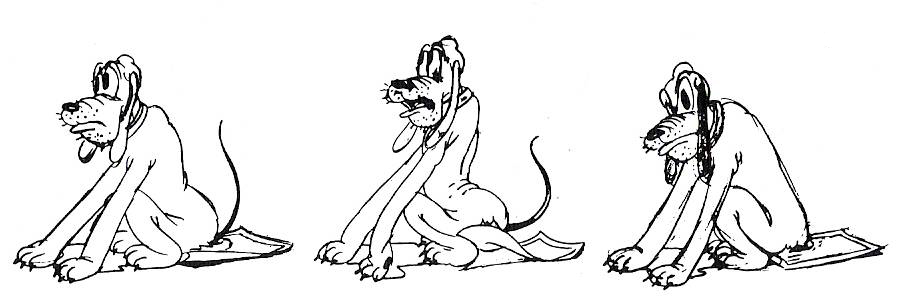Trending
Opinion: How will Project 2025 impact game developers?
The Heritage Foundation's manifesto for the possible next administration could do great harm to many, including large portions of the game development community.

Featured Blog | This community-written post highlights the best of what the game industry has to offer. Read more like it on the Game Developer Blogs or learn how to Submit Your Own Blog Post
Exploring why it is useful for designers to understand character animation, and where to start.

This post is loosely based on a microtalk I gave at Now Play This 2016 in London.
As a rule, any skill related to game development is useful for designers to know because it helps them understand the limitations and possibilities of games and helps them work together more effectively with devs in other disciplines. A working knowledge of coding is usually cited as the main secondary skill for designers to have, but there is another discipline which can be particularly fertile ground for design: the art of character animation.
So why is that?
ANIMATION IS COMMUNICATION
In games, the player needs to understand what is going on in the game world and how it’s reacting to their actions. If there are non-player characters, the player needs to understand what those characters are doing and why.

This is typically solved with so-called "barks", NPCs declaring their status verbally (eg "Find the intruder!" "I lost him," and "It was probably rats"), or with abstract HUD indicators, numbers and icons existing outside the fiction of the game.
... but there is another way.
Animation is the art of communicating thought & emotion through moving drawings.

Expression change = thought-process
In the 1930s the animators at Disney figured out that you could show a character thinking by changing their facial expression.
“When the character has a new thought or has a realization about something during the scene, he will change from one key expression to another, with the timing of the change reflecting what he is thinking. If the thought process is a sudden realization, then it will be a quick change. If it involves a scheming action, the movement will be slower.”
(The Illusion of Life, 1984)
How a character moves and the expressions they make can tell you what that character is thinking and feeling at any given moment. It turns out people are really good at reading expressions.

Say what you will about memes, but they know how to quickly communicate an idea. Why not use such an effective tool for communication in our games?
I came across a quote recently by (noted IF developer) Emily Short that said:
"It’s pointless to simulate anything in AI that you don’t also have a plan for communicating to the player - otherwise they don't see how clever you're being or (worse) what is actually sophisticated behaviour winds up looking like a bug."
If the player can't read the AI's behaviour, it just seems random.
Now, you can solve some of that with dialogue (aforementioned "barks"), but why not animation?
This is, after all, a visual medium.

Reading their next move...
By showing a character visibly reacting to player actions and to their environment you signal their thought process, both their awareness of the situation AND what they plan to do next.
People (and creatures) look at things before they interact with them.

Oh, hi!
When you see a character looking at something and pausing to observe it means they've *noticed* that thing and odds are they are going to interact with it in some way...
By showing the AI's thought process, anticipating their action, you create an opportunity for the player to respond. This creates a more interesting back and forth than if the player is just having to react to seemingly random actions from inscrutable NPCs.
Animation can be used to communicate anything from awareness, to health, to contextual interactions... and also, it should be noted, things that are not stealth and combat!
While all these tools can certainly be used for your traditional videogame scenarios, animation is especially suited to creating other types of interaction.
... like talking to people.

Expressions.
If you want to explore social interaction outside of text, you're going to need facial expression and body language... and not just in your cinematics! There is no excuse in this day and age for not having characters believably and *interactively* emote in-game.
Now, that's all very nice, but maybe your game doesn't have characters. You probably don't care about poses and facial expressions if you're making Tetris.

... but even without characters, there is a lot of overlap between what makes good animation and what makes for satisfying "juicy" gameplay. How things move is key to "game feel".

Things like squash & stretch, timing & anticipation, arcs & overlap, or appeal & staging...
Animation remains seriously underused in games as a tool for creating dynamic interactive characters and believable reactive worlds. We could be doing more with this.
OK, SO YOU WANT TO LEARN ANIMATION - Where to start?
If you're going to read one book on animation, read Richard Williams' The Animator's Survival Kit.
... if two, also definitely read The Illusion of Life by Frank Thomas and Ollie Johnston.


For more animation resources, I suggest these links: www.ninjadodo.net/animlinks
Happy animating!
[images from Disney Animation: The Illusion of Life, knowyourmeme, Witcher 3: The Wild Hunt, Alien Isolation, Monkey Island 1 and Tetris]
Read more about:
Featured BlogsYou May Also Like